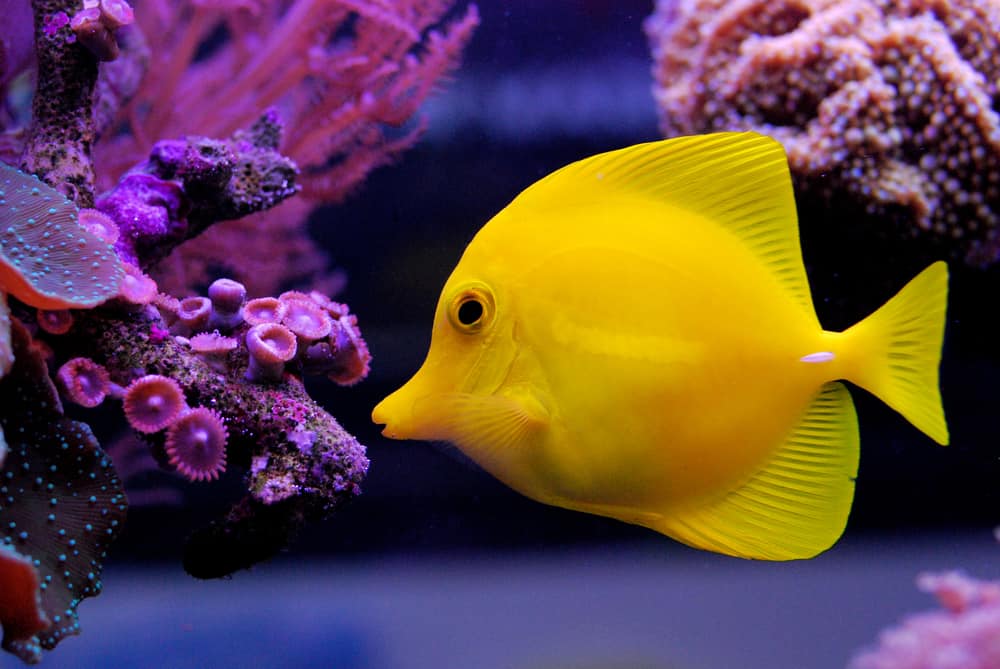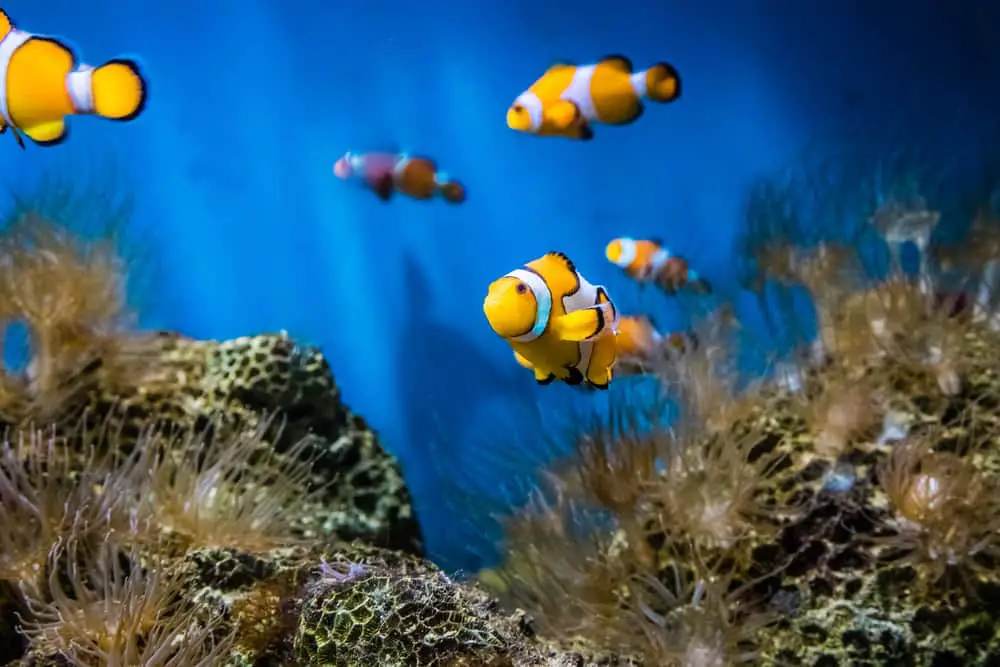Selecting saltwater fish for your aquarium is an exciting process. As a 75-gallon tank is generously sized, you have the option to house a few larger species or multiple species of smaller fish.
There are several factors that you will need to consider before adding fish to your tank. Of course, you must ensure that the tank is sufficiently sized for the volume of fish that you intend to house inside it.
You must also consider the care demands of the different species along with their temperaments and their compatibility with other fish. Putting multiple species together that should not share the same environment will likely result in consequences.
Below we have identified the different species of saltwater fish that can live inside a 75-gallon tank, accounting for those that can share the tank with others and those that you should avoid putting in the same waters.
Table of Contents
Yellow Tang
The Yellow Tang is one of the most popular species of saltwater fish. Easy to care for, this species has a striking appearance that will introduce brightness to your tank setup.
They aren’t a particularly demanding species and can live on a varied diet consisting of meaty fish and seaweed.

Due to the often territorial nature of this species, it is advised that you keep one inside the tank unless they are introduced at the same time. You should also try and avoid overcrowding the tank with objects that may be potential obstacles.
If you intend to keep more than one yellow tang inside the tank, you will need to upgrade to a larger option as it is likely that a 75-gallon tank will be too restricting.
Clownfish
Clownfish is a saltwater species that typically live near the reefs. They are orange and white with a striped patterning. They have a layer of mucus on their skin that protects them from anemone poison.
They have slightly demanding care requirements as they need warm water with saltwater content that closely resembles that of the ocean.
Additionally, the water that they inhabit needs to be tested regularly. Despite their care needs once a routine is established they aren’t overly challenging to look after.
You can keep between 10 to 15 clownfish so long as they are provided with their own anemones.
Flame Angelfish
A flame angelfish is a popular dwarf variety of the angelfish species.
They have semi-aggressive temperaments and may display traits of aggression towards other species of fish that are added to the tank after them because they are likely to have established their territory at this point.
As a hardy species, flame angelfish tend to be easy to care for and they generally tend to live peacefully with other species that aren’t angelfish.
Antennata Lionfish
Antennata Lionfish are a saltwater species with striking, large fanlike pectoral fins. They are semi-aggressive and expected to reach a maximum size of 7 inches when they reach adulthood.
They are easy to care for however, they tend to eat smaller species and for this reason, they should be kept with slightly larger species. A 50-gallon tank is the minimum size that you should keep an antennata lionfish.
Copperband Butterflyfish
The Copperband Butterflyfish has a long nose and colorful appearance. They get on with the majority of other species although they thrive when sharing the water with other fish with similar personalities.
Because they are slightly more difficult to care for, they aren’t advised for those who are new to owning saltwater fish.
How Many Saltwater Fish Can I Put In A 75 Gallon Tank?
Multiple factors will determine how many fish you can put in a 75-gallon tank. Of course, the temperament of the fish provides one of the most influential factors because some cannot share the environment with species that are added after them because they will become territorial.
There is also a risk of some larger species of fish-eating those that are smaller than them depending on their dietary habits. Furthermore, there are also certain species such as the yellow tang which cannot be housed with many other species due to the size that they grow too.
If you have multiple rocks and other objects inside the tank you won’t be able to add as many fish because more obstacles provide an issue regarding how easily they can swim around the tank.
For larger species of fish, you must be prepared to upgrade your tank as they grow and reach adulthood particularly if you have more than one because the tank may become limiting and impractical for them.
A general rule is to allow one inch of full-grown fish per gallon of water. Keeping 6 to 7 species of larger fish inside a 75-gallon tank is not advised as they will not be able to swim freely and live comfortably. They are also likely to become more territorial.

